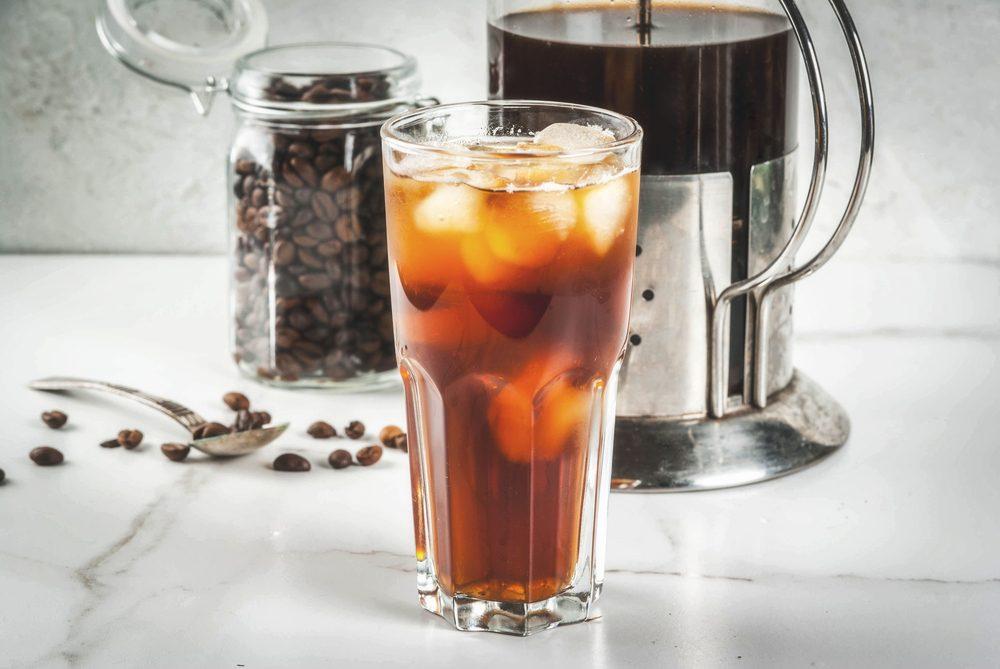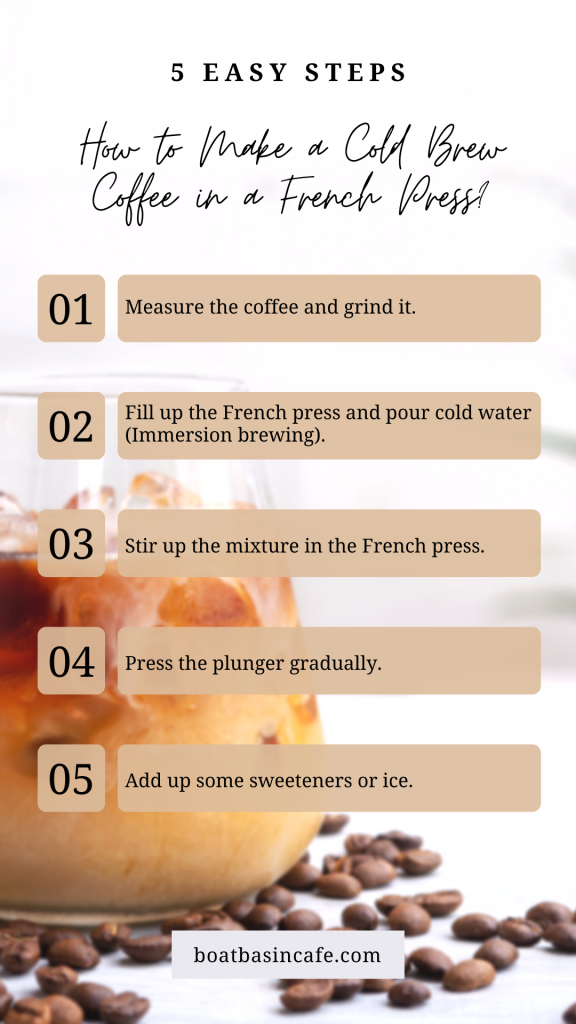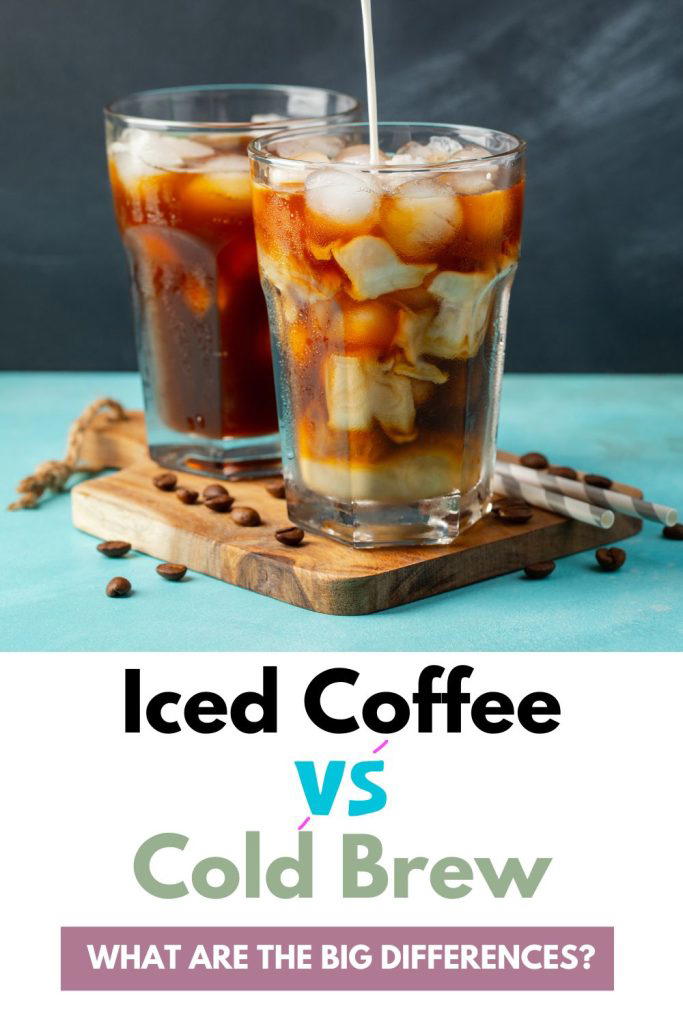Puzzled over the addition of nitro coffee to your local coffee shop menu?
Introduced to chain coffee shops in 2012, this kind of coffee is now available almost everywhere.
But what is nitro coffee?
We go into the details on this million-dollar question. We’ll talk about the science behind nitro coffee, what it tastes like, and how you can make some.
If you’re tired of the same old cold brew you’ve been sipping on for years, this nitro cold brew coffee will dazzle your taste buds. Keep reading to find out more about nitro brew coffee!
So What Exactly is Nitro Cold Brew?

The term nitro coffee sounds rather scientific; something concocted in a lab instead of brewed in a coffee shop or made at home. But the Starbucks nitro coffee isn’t that complex; in fact, the idea behind nitro coffee is pretty simple and commonplace.
Nitro coffee is simply cold-brewed coffee that is infused with nitrogen. Sounds freaky or gross?
We’ve been infusing beverages with gases for decades now. Your soda is basically a sugary drink infused with carbon dioxide. A SodaStream is a machine that infuses your water with the very same gas.
Nitrogen, a colorless and odorless guess has been used in many kinds of beer. These drinks are often referred to as nitrogenated. They make for silky and creamy beers and the concept of doing the same thing to coffee isn’t all that outrageous.
The result? A cold brew but so much better. Nitrogen infused coffee has the low acidity and smoothness of a cold-brew made with high-quality, but it has the added silky mouthfeel.
This silky texture comes from the tiny bubbles. The small bubbles don’t affect the taste but give it a delicate feel (think of the silky texture of steamed milk).
Because of this texture, the coffee is sweet, light, and silky which is all the things you could want in a cold brew. Because of the creamy smoothness, most people find no need to add sweeteners to this coffee.
Simply pour over ice, and you will have a magnificent nitro iced coffee. But you can also add a splash of milk, sweeteners, or even flavored syrups to give them a boost.
Nitro coffee also has a certain visual appeal. When poured from a tap, it comes with a shower of bubbles that can be quite mesmerizing to look at.
So is nitro coffee better than regular cold brew coffee?
To start off, nitro coffee contains a higher caffeine content than regular coffee. This is because it contains less water. It is also a good option because it is less acidic, which makes it good for people with sensitive stomachs and heartburn.
It is also considered ‘healthier’ because it has a natural sweetness. This makes it less likely that you will have to add sugar and other sweeteners, so fewer calories are going in.
At the end of the day, whether it is healthy depends on how you drink this coffee. If you drink it with lots of milk, sugar, and a pound of whipped cream, then it isn’t the healthiest option out there.
Health Benefits of Drinking Nitro Coffee
Increases Energy Levels
The presence of nitrogen in nitro coffee adds to its smooth, creamy texture. This also leads to a more sustained energy boost than regular coffee. The nitrogen also helps to reduce the bitterness of coffee, making it more palatable to people who loathe the strong flavour of regular coffee.
Increases Mental Alertness
Drinking Nitro coffee is a great way to increase mental alertness and productivity. It can help with attention and focus while also providing a steady energy boost.
Improves Heart Health
Nitro coffee is high in antioxidants, which can help to reduce inflammation and support heart health. According to studies, drinking coffee on a regular basis can help reduce the risk of coronary heart disease and stroke.
Boosts Metabolism
The nitrogen helps with food breakdown and nutrient absorption while also causing satiety. This can help with desire decrease and overeating avoidance.
Aids Digestion
Drinking nitro coffee can aid digestion and lower the risk of gastrointestinal disorders like as bloating and constipation. The nitrogen helps to speed up digestion and can help to alleviate gastrointestinal symptoms.
Immune System Booster
Nitro coffee includes components that can assist to improve the immune system and lower the risk of illness. Coffee drinkers had a decreased chance of acquiring some forms of cancer, according to research.
History and Origin of Nitro Coffee
Nitro coffee is cold-brewed coffee that has been laced with nitrogen gas. Cuvee Coffee, a tiny coffee establishment in Austin, Texas, developed it in 2011. Michael Johnson, the shop’s proprietor, was fascinated by the notion of employing nitrogen to give beer its frothy texture and wanted to apply the same approach to coffee. He began experimenting with various techniques to infuse nitrogen into the coffee, finally landing on a method of pressurising the coffee and infusing it with nitrogen gas using a draft-style keg system.
Nitro coffee has subsequently grown in popularity, thanks to its peculiar creamy texture and frothy head, which make it a favourite among coffee drinkers. The coffee is traditionally served cold and is recognised for its smooth and creamy texture, as well as its sweet and somewhat bitter flavour. It is now available in cans and bottles and has become a popular alternative in coffee shops and cafés. It is also possible to make it at home using a basic nitro coffee equipment.
The Differences between Nitro Coffee and Regular Coffee
| Aspect | Nitro Coffee | Regular Coffee |
|---|---|---|
| Texture | Creamy and smooth, with a foamy head. | Thin and watery, with little to no foam. |
| Taste | Rich and slightly sweet, with a subtle chocolate or caramel flavor. | Bold and robust, with a range of flavors depending on the beans used. |
| Caffeine | Generally higher in caffeine than regular coffee. | Typically lower in caffeine than nitro coffee. |
| Acidity | Lower acidity, which can make it easier on the stomach. | Higher acidity, which can be too strong for some people. |
| Preparation | Cold brewed and infused with nitrogen gas to create a smooth, velvety texture. | Brewed using hot water and ground coffee beans. |
| Serving | Typically served on tap or from a can, often at coffee shops or specialty stores. | Can be made at home using a drip coffee maker, French press, or other methods. |
| Price | Often more expensive than regular coffee due to the additional preparation and nitrogen infusion. | Generally less expensive than nitro coffee. |
| Availability | May not be as widely available as regular coffee, although it’s becoming more popular. | Widely available in coffee shops, restaurants, and grocery stores. |
Nitro coffee is distinguished by its creamy texture, rich flavour, and high caffeine concentration. It’s an excellent choice for coffee enthusiasts looking for something a little different than standard coffee. Normal coffee, on the other hand, is a timeless option that comes in a variety of tastes and brewing ways. Whether you prefer nitro coffee or ordinary coffee, both are a fantastic way to begin the day!
A comparison price table for nitro coffee and regular coffee:
| Shop | Nitro Coffee | Regular Coffee |
|---|---|---|
| Starbucks | $4.45 (tall) | $1.95 (tall) |
| Dunkin’ | $4.59 (medium) | $2.09 (medium) |
| Peet’s Coffee | $4.25 (small) | $2.50 (small) |
| Caribou Coffee | $3.99 (small) | $1.99 (small) |
| Local Cafe/Shop | $4.00 – $5.50 | $2.50 – $4.00 |
As you can see, the price of nitro coffee can vary depending on the coffee shop or cafe you visit. On average, nitro coffee tends to be around $1-$2 more expensive than regular coffee.
How to Make the Nitro Cold Brew
Making nitrogenated cold brew isn’t rocket science. To do so, all you need to do is cold brew a batch of coffee using high-quality coffee beans. Then, infuse it with nitrogen. That’s literally all there is to it!
Making Nitro Cold Brew at Home:
If you don’t live near a coffee shop or consider regularly buying your coffee to be a waste of money, you might consider making your own nitro coffee. In fact, you might like your handiwork better than the coffee bought from a shop.
Here’s how you can make an awesome homemade nitro cold brew.
What You Need:
- Coarsely ground coffee
- Water
- A large container or cold brewer
- Cream whipper
- 2 Nitrous oxide cartridges
Instructions:
- Cold-brew your coffee in a container or brewer. This can take up to 24 hours.
- Pour the required amount of the cold-brewed coffee into the cream whipper canister and seal.
- Charge with one nitrous oxide cartridge, and then shake for 30 seconds.
- After that, discharge the gas, open the canister, and pour into a glass over ice, and enjoy.
- Don’t have the time to cold-brew for a whole day? Here’s how you can make a quick nitro coffee that takes an hour instead of ages.
- Inside the cream whipper, combine 9 ounces coarsely ground coffee with 3.5 cups of cool tap water and then seal the whipper.
- Charge with 2 nitrous oxide (N2O) cartridges, then shake for 30 seconds. Afterward, allow it to stand for 5 minutes.
- Discharge the gas by gently depressing the trigger on the canister while holding a glass over the nozzle to minimize mess.
- Repeat with 2 more cartridges and shake for 30 seconds again.
- Let it stand for 1 hour before discharging gas again.
- Finally, open the canister and decant the concentrate through a coffee filter into your glass or jar.
The quick method makes a lighter and milder brew than the traditional route of brewing cold coffee. People who like their coffee strong will prefer cold brewing their coffee in advance. On the other hand, people who like their coffee mild will prefer the faster version.
From here, you can simply pour the concentrate over ice and enjoy a simple but amazing drink. You can add a splash of creamer or simple syrup to sweeten things up a notch. You can even add things like whipped cream and other flavorings.
Want to take things to the next level? Blend your nitro cold brew with ice and the quality creamer of your choice for the iced coffee dreams are made of!
Best Beans for Making Nitro Coffee:
The best way to make a great tasting nitrogen cold brew is to start with good ingredients. In this case, go with quality coffee beans with mild flavors and low acidity. For the best results, use 100% Arabica beans as they have a smoother, sweeter taste flavor with notes of chocolate.
Here are some of the top coffees for a good nitro cold brew
- Tiny Footprint Coffee Organic Cold Press Elixir: These beans are roasted in environmentally-friendly ways and are made from high altitude Arabica beans. You can also get them as whole beans or pre-ground.
- Intelligentsia Coffee: This medium roast coffee is robust with notes of milk chocolate, along with accents of breakfast teas, lemongrass, and pineapple.
- Bizzy Organic Cold Brew Coffee: These beans are ground to the perfect consistency for cold brewing. They also brew the sweetest, smoothest coffee ever; with notes of caramel and hazelnut. This is the ideal coffee for people with busy schedules.
Best Tools for Making Nitro Brews:
A few years ago, it would have been almost impossible to find equipment that could make nitro coffee at home. But times have changed and you can pick the tools of your choice:
Cream Whippers:
These are the most common things people use to make nitro coffee. You just need to charge the whipper with a nitrous oxide cartridge and shake for thirty seconds to infuse the brew with the gas.
Disperse the gas turn the whipper upside down, and pour out your coffee. It’s as easy as that!
Keg-Style Infuser:
Keg-style infusers like the NitroPress are extremely simple to use. After filling the canister, replace the canister head.
Then, you just have to insert the nitrogen cartridge into the charger holder and tighten it. Next, shake the NitroPress, turn it over, and pull the trigger into your glass or pitcher and you’re done!
Frequently Asked Questions
Below you’ll find answers to questions we get asked most often about nitro coffee.
01. Is Nitro Coffee Bad for Me?
There is no evidence that nitro coffee is harmful or dangerous. However, it contains a lot of caffeine, so make sure that is okay for you.
02. What’s So Special about Nitro Coffee?
Nitro coffee is different because it is infused with nitrogen. This gives it a smoother, silkier texture and a nature creaminess. It also creates a cascading effect when poured, which is very visually appealing.
03. What Does Nitro Coffee Taste Like?
Nitro brewed coffee tastes a lot like regular cold brew, but with a much silkier mouthfeel. Moreover, this adds to the sweetness of the drink, making it light and very smooth.
04. How Long Does Nitro Coffee Last?
When refrigerated and sealed in an airtight container, nitro coffee concentrate will stay fresh for 3 – 4 weeks. However, this time will decrease the more the container is opened, and if the brew is diluted with water or milk.
05. What are the Best Add-Ons for Nitro Coffee?
Most baristas recommend drinking nitro coffee without any creamers, as the brew is naturally creamy. However, you can add syrups for sweetness and added flavor. Things like caramel, hazelnut, and cinnamon dolce are popular among regular coffee drinkers.
Closing Thoughts
New drinks are a great way to change things up and add variety to your routine. If you enjoy iced or cold brew coffees, there’s a good chance you will like nitro coffee as well.
When a coffee newb asks you ‘what is nitro coffee?’, you can spell all the details like a professional barista! What do you think? Will you start making nitro coffee at home?









